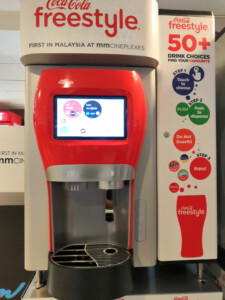
By Jael Batty
Caffeine isn’t just prevalent in our food––it’s prevalent in our wastewater, waterways, and treated water.
On February 8th, Google celebrated the 225th birthday of Friedlieb Ferdinand Runge, the scientist who accidentally discovered caffeine. Runge was asked by a friend to analyze the chemical makeup of coffee beans. In doing so, he discovered the compound now called caffeine.1
Caffeine Is Found in a Range of Foods
Caffeine is a natural stimulant found in coffee, cocoa, and tea.2Besides soft drinks, it can also be found in a range of coffee- or chocolate-flavored foods, including and breakfast cereals, puddings, yogurts, and ice creams. It is used in medications as a diuretic and to improve effectiveness.3
Caffeine Is Flushed into the Wastewater System
Caffeine is also showing up in our water supplies. This is because the human body doesn’t metabolize or absorb all the caffeine ingested. Caffeine is excreted by the body and flushed into our wastewater. Wastewater, in turn, is treated and recycled back into the environment, or––in some cases––directly back into drinking water.4
Additional sources of caffeine in the wastewater include running coffee grounds through garbage disposals4and dumping caffeinated drinks into the sewage system. U.S. wastewater treatment plants (WWTPs) have 60% to 70% efficiency rate for removing caffeine. Swiss plants have a higher rate of elimination ––81% to 99%. Nevertheless, concentrations of caffeine are ever-present in Swiss lakes and rivers.5
Caffeinated Water Is World-Wide
Studies of caffeine concentrations in waterways correlate with precipitation data, suggesting that caffeine is washed into the environment when WWTPs and septic systems are overloaded.5,6 America and Switzerland aren’t the only countries affected by caffeine in our waterways. It has been found all over the world.6,7,8 Nor is it only contaminating our lakes, rivers, and drinking water. It has also been found in our oceans.9
Caffeinated Water Is not Naturally-Occurring
Concentrations of caffeine in our natural waterways are miniscule. It should be noted, however, that caffeine does not naturally occur in waterways and the environmental impact is unclear.4
Citations:
1. G Steer (2019). Google doodle celebrates the chemist who accidentally ‘discovered’ caffeine, Time Magazine, http://time.com/5525013/google-doodle-friedlieb-ferdinand-runge/
2. Sources of caffeine,The Institute for Scientific Information on Coffee, https://www.coffeeandhealth.org/topic-overview/sources-of-caffeine/
3. Besides coffee, these other foods, beverages, and medications may also cause you to stay awake, The National Sleep Foundation, https://www.sleep.org/articles/foods-with-caffeine/
4. Caffeine is in our water supply, CafeineInformer, https://www.caffeineinformer.com/caffeine-in-water-supply
5. I Buerge, T Poiger, M Müeller, H Buser (2003). Caffeine, an anthropogenic marker for wastewater contamination of surface waters, Environmental Science & Technology, https://pubs.acs.org/doi/10.1021/es020125z
6. P Spense (2015). Using caffeine as a water quality indicator in the ambient monitoring program for third fork creek watershed, Durham, North Carolina, Environ Health Insights, https://www.ncbi.nlm.nih.gov/pmc/articles/PMC4482327/
7. S Weigel, U Berger, E Jensen, R Kallenborn, H Thoresen, H Hühnerfuss (2004) Determination of selected pharmaceuticals and caffeine in sewage and seawater from Tromsø/Norway with emphasis on ibuprofen and its metabolites, Chemosphere, https://www.ncbi.nlm.nih.gov/pubmed/15212901
8. L Eisenstadt, Drugs in the water, Triplepoint, https://www.bu.edu/sjmag/scimag2005/features/drugsinwater.htm
9. M Liebert (2013). Caffeine as a contaminant of freshwater and marine systems: an interview with Elise Granek,PhD, Journal of Caffeine Research, https://www.liebertpub.com/doi/abs/10.1089/jcr.2012.1221?journalCode=jcr
Related Posts

Bargaining for Clean Water: Why Dean Kamen Invented the Coca-Cola Freestyle
By Jael Batty When Kamen asked Coke for help distributing his water purifier, Coke challenged Kamen to develop a better soda fountain first. Dean Kamen, Inventor of Medical Technology The inventor of the Segway, Dean Kamen is known in the scientific community for developing medical equipment. His inventions include a wearable prescription pump for insulin...

Worldwide Agricultural Growth
Our HUMA GRO® product line continues to grow providing the world of agriculture with a solution that really works, both efficiently and effectively. We’re dedicated to researching and developing new solutions to world-wide agricultural challenges and to help farmers grow more – to maximize yields and improve fruit quality. If you are interested in learning...

This Week in Ag #25
36 years ago, a wide-eyed intern walked into the office of Indiana Prairie Farmer magazine. It was a baptism by fire. Paul Queck, the seasoned editor, told him, “We’d like to have you take a shot at writing what we hope to be the cover story for July. Since you’re only here for a few months, we...

